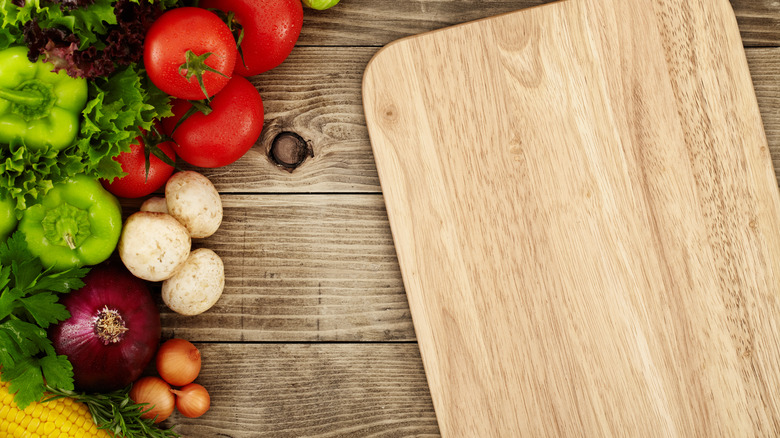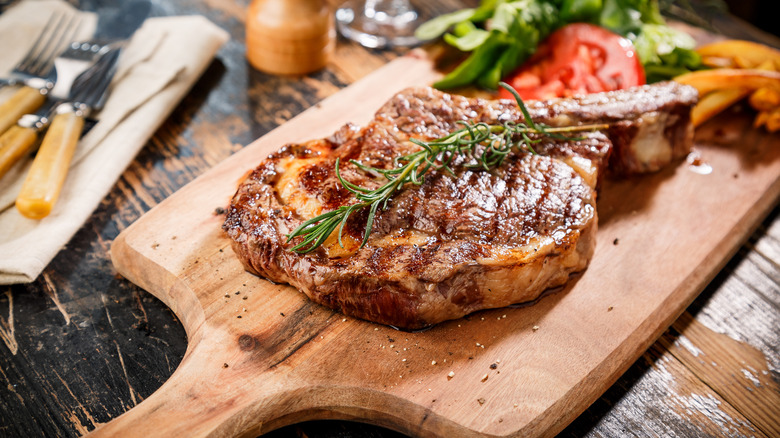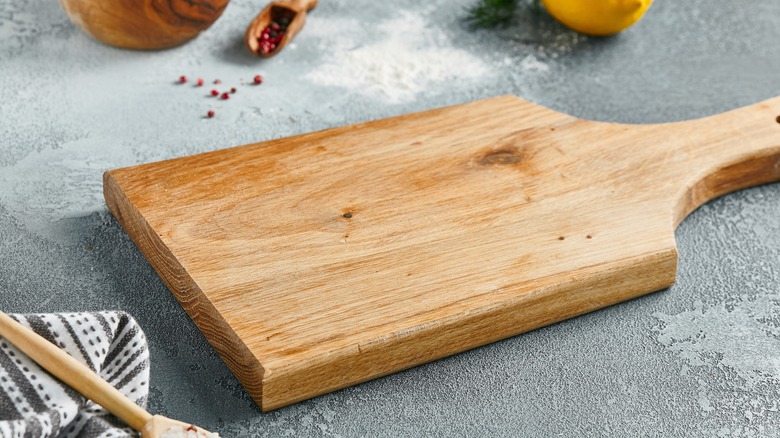The Oils That Should Never Be Used On A Wooden Cutting Board
Having a cutting board is important as having a good set of pots and pans or a solid set of knives. A cutting board provides a protective barrier between your knives and your countertops, preventing scratches and damage to your kitchen surfaces, and preserving your knives. Plus, a cutting board provides better grip and stability for your food, making it easier and safer to chop. A cutting board can also be washed and sanitized more easily than your countertops. While plastic cutting boards can be easier to clean, wooden cutting boards offer several benefits.
For one, wooden cutting boards are softer than plastic, which means that they are less likely to dull the blades of your knives, but they are also more durable than plastic. They are less likely to develop deep scratches, especially if you take care of them. Wooden cutting boards need to be oiled often, but you should never use high-fat oils, such as peanut, coconut, or vegetable oils, on wooden cutting boards.
Choosing the best oil for your cutting board
Even though wooden cutting boards don't develop very deep cuts, knives can create tiny grooves and scratches on the surface of the wood. Over time, these grooves can harbor bacteria, which can be dangerous if they come into contact with food. They can also cause your board to weaken if you allow them to dry out, which can lead to bigger cracks. By applying a food-grade oil to the cutting board, you create a protective barrier that helps to prevent moisture from sinking into the wood through these cuts.
Do not use vegetable-based oils, like corn oil or olive oil, though, because they have a high fat content and can become rancid over time. This will not only smell bad, but it can also introduce bacteria to your food. You should use a food-grade oil, such as mineral oil that is rated for food contact, for best results. You can also use beeswax or walnut oil.
Washing and oiling your board
It's important to clean your wooden cutting board after each use to prevent bacteria growth and maintain quality. Scrape off any excess food debris from the board. Then, sprinkle coarse salt or baking soda on it and rub gently with a damp cloth or sponge to remove any food particles. Use a mild dish soap and warm water to wash the board. Avoid using abrasive sponges or steel wool, because these can scratch the board's surface. You should also avoid soaking the board in water or putting it in the dishwasher, which can cause it to warp or crack.
Once the cutting board is completely dry, apply a thin layer of oil to the board, using a clean cloth or paper towel. Make sure to coat the entire board, including the sides and edges. Let it soak into the board for several hours to penetrate the wood. After the oil has soaked in, use a clean cloth or paper towel to wipe off any excess oil. This process will help prevent the wood from drying out and splitting, and it will keep it looking its best. If you use your board often, you may need to oil it frequently.


